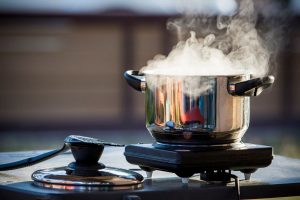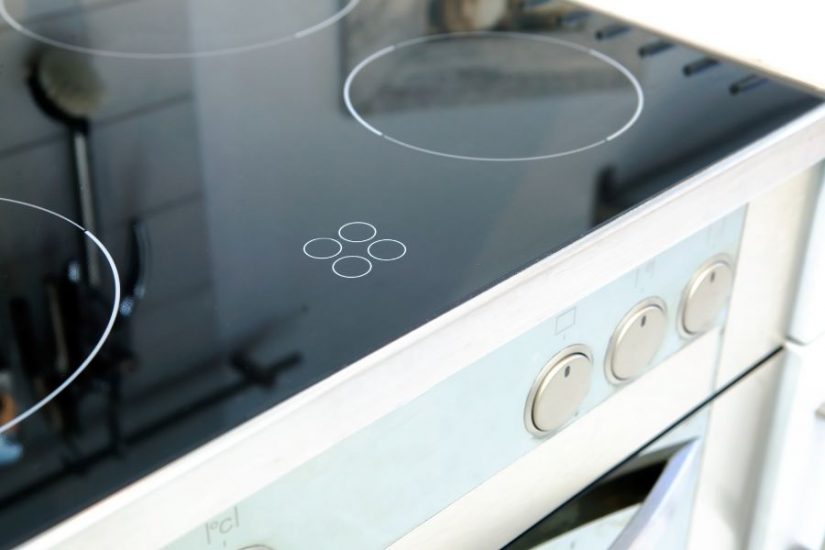What’s the Wattage For Electric Stove?
Electric stoves are staples in modern kitchens. Frankly, that’s not surprising because it comes in handy. But as you admire your stove’s sleek design, a question pops into your head – how much electricity does this culinary marvel use? You are not the only one curious about the wattage for electric stoves.
To answer this question, we’ll explore what wattage means and how much your electric stove consumes.
What Does Wattage Mean?
Electricity is the invisible magic that powers up our lives, from the device you’re reading this on to that snazzy electric stove you’re eager to whip up a meal on. At the heart of understanding the electric stove use is the concept of wattage. But what exactly is wattage?
Simply put, wattage measures how much electricity an appliance uses per hour. Think of it like the heartbeat of your electric stove. Just as our hearts pump faster or slower depending on what we’re doing, electric stoves’ wattage varies based on power and efficiency.
Now, when you hear terms like “energy efficient electric oven” or “how many watts does an electric stove use,” it means how efficiently that electric stove converts electrical energy into heat. An energy-efficient electric oven might use fewer watts. But it may produce the same amount of heat, which is excellent for the environment and your utility bill.
It’s like having a car with excellent fuel economy – it goes the same distance but uses less fuel. Similarly, electric stoves that are energy efficient do their job while consuming less electricity.
Electric Stove Power Consumption
Electric stove power consumption is a hot topic for chefs and savvy homeowners. After all, you’re drawing power every time you turn on that electric stovetop or oven. That translates to how much energy you’re using and the cost reflected in your electricity bill.
Let’s break it down: How many watts does your electric stove use? A standard electric range, on average, might run between 2,000 to 5,000 watts, depending on its size and type. For context, that’s quite a leap from the humble light bulb in your bedside lamp! Electric ovens draw power, too, often consuming around 1,000 to 5,000 watts.
Yet, it’s essential to note that not all cooking is created equal. While your electric oven or stovetop might have a higher wattage, they might not necessarily be on at their maximum power.
This fluctuating power usage means that while the wattage electric stoves boast might seem high, their energy consumption during your dinner prep might be less alarming than you’d think.
Types of Ovens and Stoves
Now, navigating the world of kitchen appliances can feel like rocket science, but let’s simplify. Here’s a menu of options:
Electric Stovetop
This is your standard electric range. It heats up using coils or heating elements and typically offers even cooking. They are popular for their ease of use and consistent heating.
Electric Oven
Unlike their stovetop counterparts, electric ovens draw heat from an element hidden within. These ovens are renowned for their even heating – perfect for Sunday roast or birthday cake.
Induction Stove
The tech-savvy chef’s delight! These use electromagnetic energy to heat pans directly, offering quick, efficient cooking. They might seem like they’d consume a lot, but they’re often considered an energy-efficient stove option since they heat up faster and lose less heat.
Gas Stove
Ah, the traditionalist’s choice. Gas stoves offer flames adjusted with a knob, giving the chef more control. While they don’t use electricity for the flame, electric components or ignitions add minimal power consumption.
Factors That Affect the Oven’s Power Consumption – Turn Up the Heat Without Turning Up the Bill
Behind every perfectly baked lasagna or crisped roast chicken, a dance of energy usage is at play. So, what determines how much power your oven consumes? And how can you cook smartly while keeping those kilowatt hours in check?
Oven Type
A convection oven, with its internal fan, often uses more electricity than its standard counterparts. However, cooking food faster and more evenly compensates, potentially balancing energy usage over time.
Wattage for Electric Stove
It’s a fundamental principle—the higher the wattage, the greater the heating power. Most electric ovens have a higher wattage, especially those boasting four or more burners.
Burner Size and Usage
Using a larger burner for a small pot? You might be wasting energy. Matching pot size to burner size ensures efficient cooking, preventing wasteful heating.
Frequency and Duration
Simply put, how often and how long you use your oven directly impacts its power consumption. Using the oven multiple times daily or for extended periods will consume more electricity.
Temperature Setting
Higher temperatures mean greater energy consumption. Think of it as the speedometer of your oven; the higher you go, the more fuel you burn.
Gas vs. Electric
While gas ovens primarily use gas hookups, they might still consume electricity for features like digital displays or electric ignitions. Comparatively, an electric cooker relies solely on electrical power, often making it a higher consumer in kilowatt-hours.
Tips to Conserve Power While Cooking

Use the Right Burner
As mentioned, aligning the pot size with the burner size is essential. A small pot on a large electric cooktop burner can waste a lot of heat.
Opt for Glass and Ceramic Bakeware
These materials retain heat better than metal. Hence, you can set your oven at a temperature 25°F lower than the recipe suggests, saving energy without compromising cooking time.
Limit Preheating
While some dishes require a preheated oven, many do not. You can skip or shorten the preheating phase for dishes that cook over long periods, like roasts.
Keep the Oven Door Closed
Every time you open the oven door, you let out heat. This drop in temperature means the oven has to consume more electricity to return to the desired heat.
Maintain Your Oven
An oven in good shape is more efficient. So, regularly check the door seals and ensure even heating. Remember, an oven with less heating power due to malfunctioning parts will require more energy to get the job done.
Cook in Batches
If you use your oven, make the most of it. Bake a few dishes consecutively, making the most of the heat you’re already using.
FAQs
How Can I Find Out How Many Kilowatt Hours My Induction Cooktop Uses?
Check the appliance’s manual or label for its wattage. Then, estimate how many hours you use it in a month. Multiply the wattage by the number of hours to get the kilowatt hours. Finally, divide by 1,000 (since 1 kilowatt equals 1,000 watts).
My Gas Range has an Electric Ignition. How Does this Impact My Electric Bill?
While the pilot light relies on natural gas, the electric ignition uses electricity each time it sparks. However, it’s generally a minimal amount and more energy-efficient than a constantly running pilot light.
How Can I Reduce the Electricity Usage of My Kitchen Appliances?
Match pot size to burner size, limit preheating, use glass and ceramic bakeware, and maintain your appliances to ensure they run efficiently. Also, monitor your electric bill to detect any spikes in consumption.
Conclusion
Electric stoves are one of the numerous things in a household. But they are quite essential. Mastering the intricacies of kitchen wattage enhances our culinary adventures and steers our journey toward energy efficiency.
With every sizzle, simmer, and roast, understanding the power play behind the scenes ensures that our meals are not only flavorful but also eco-friendly.
Here’s to cooking up both delightful dishes and a brighter energy future!


